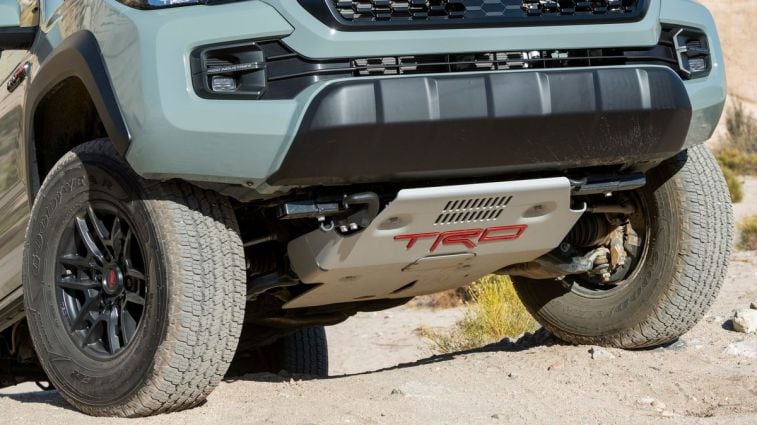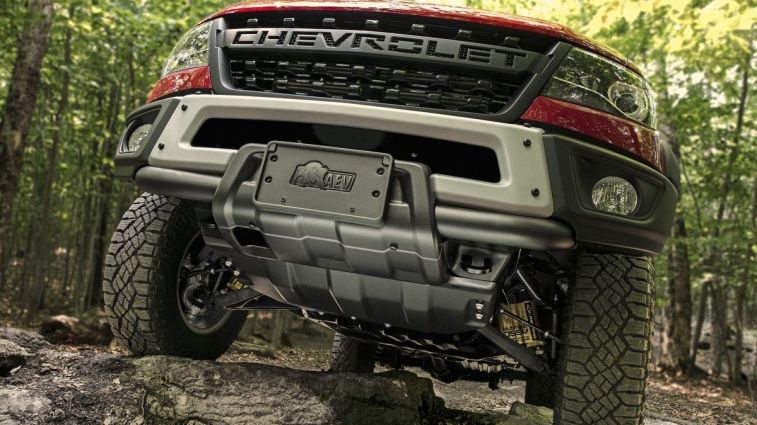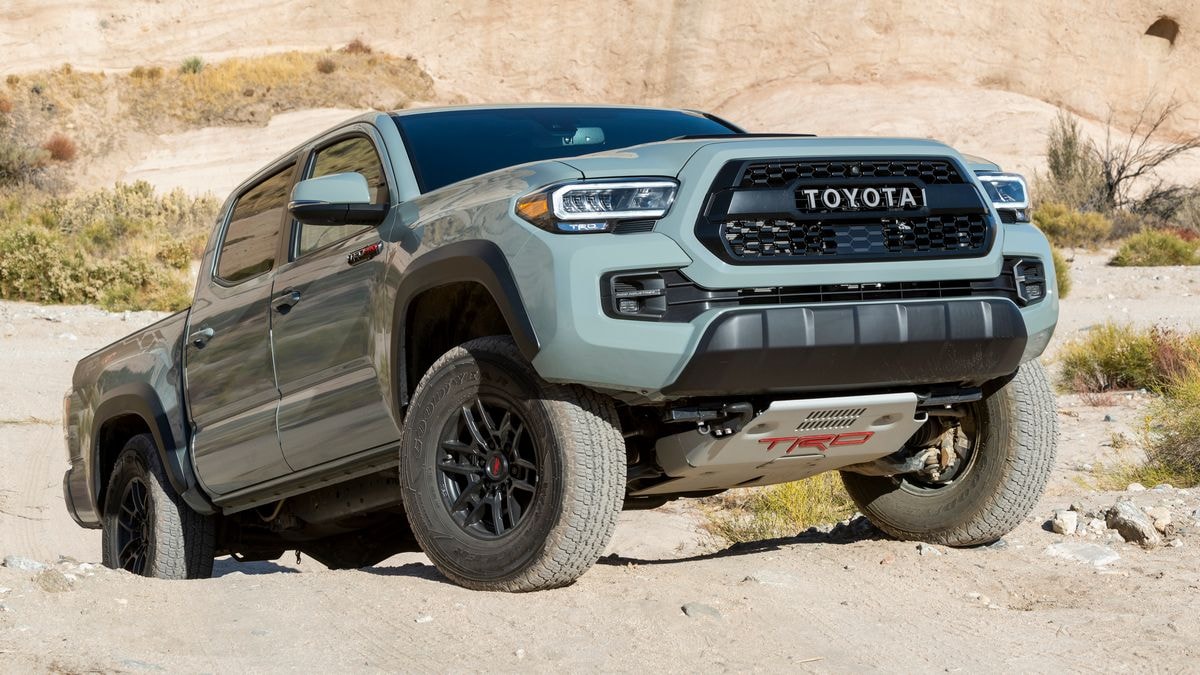A skid plate is a durable accessory for protecting a vehicle’s undercarriage from rough terrain. Typically made of steel or aluminum, it acts as a barrier to absorb the impact of rocks and debris that could otherwise damage exposed components.
That sounds good, but do you need one? Should you include a skid plate when building a factory order for a new truck, or pay extra to have one as a dealer-installed accessory?
Who Needs a Skid Plate?
Skid plates are essential for off-road enthusiasts or workers at demolition and construction job sites. The shield protects against broken concrete, rocks, lumber scraps, fallen logs, and other obstacles that can puncture, bend, or rip away vital parts that keep the vehicle operating.

Even in urban settings, underbody protection can be beneficial when low cars encounter steep grades at parking lots or driveways and bottom out. Splash guards — the lighter and less durable cousins to skid plates — also offer an added layer of defense against elements on paved streets, such as water, road salt, and small debris that can lead to corrosion and damage over time.
Benefits of Skid Plate
Installing a protective plate shields the engine and exposed undercarriage parts from the forceful impact of heavy debris on rugged terrain and provides related benefits.
- Durability. Vehicles with skid plates can withstand harsher conditions. The added durability contributes to a longer vehicle life with fewer repairs.
- Resale value. A vehicle with skid plates may have a higher fair market value. To many potential buyers, metal armor indicates that parts have been protected and the vehicle is less likely to have sustained damage or excessive undercarriage wear and tear.
- Off-road performance. Skid plates let off-road drivers tackle challenging terrain, enabling more adventurous driving in less accessible locations.
While a skid plate helps protect exposed components underneath a vehicle, the armor isn’t designed to prevent frame damage from significant impact.
Skid Plate Cost
Skid plate prices vary depending on the quality, coverage area, and your off-roading SUV, truck, or Jeep. A good-quality front skid plate can cost as much as $250. Some owners choose multiple plates to protect the front end, transmission, gas tank, and more. Others might select an entire belly skid plate for about $2,000 or more.
While installation costs are not inexpensive, consider the expense and inconvenience of repairs. Depending on your vehicle, replacing a transfer case can cost several thousand dollars, so it’s worth protecting.
Should You Get a Skid Plate?
Assess your driving conditions when considering whether to pay extra for a skid plate in your next vehicle. The investment is worthwhile if you frequently drive off-road or navigate poorly maintained roads.
The benefits of a skid plate may not justify the additional cost if your regular route is well-maintained with minimal hazards. However, if you regularly encounter uneven pavement, potholes, or gravel, or if you enjoy occasional moderate trail use, investing in a skid plate could save you from costly repairs in the future.
Similarly, residents of areas prone to hurricanes or other weather-related natural disasters might decide that having a plate to protect the undercarriage brings peace of mind for “just in case” scenarios.
Deciding on Skid Plates
Paying extra for a skid plate in your next vehicle depends on several factors, including driving habits, vehicle type, and budget. If you’re regularly on rough terrain, it’s a prudent investment that can save you money and reduce stress in the long run. Even if you primarily stay on the pavement, a plate can protect the vehicle’s belly from unexpected hazards.

Ultimately, the benefits of protection, durability, and potential resale value often outweigh the initial cost, making skid plates a wise investment for many drivers.
Read Related Articles:
- Off-Roading: Expert Tips on What to Take With You
- Overlanding: How Is it Different from Off-Roading?
- Best Off-Road Trucks








